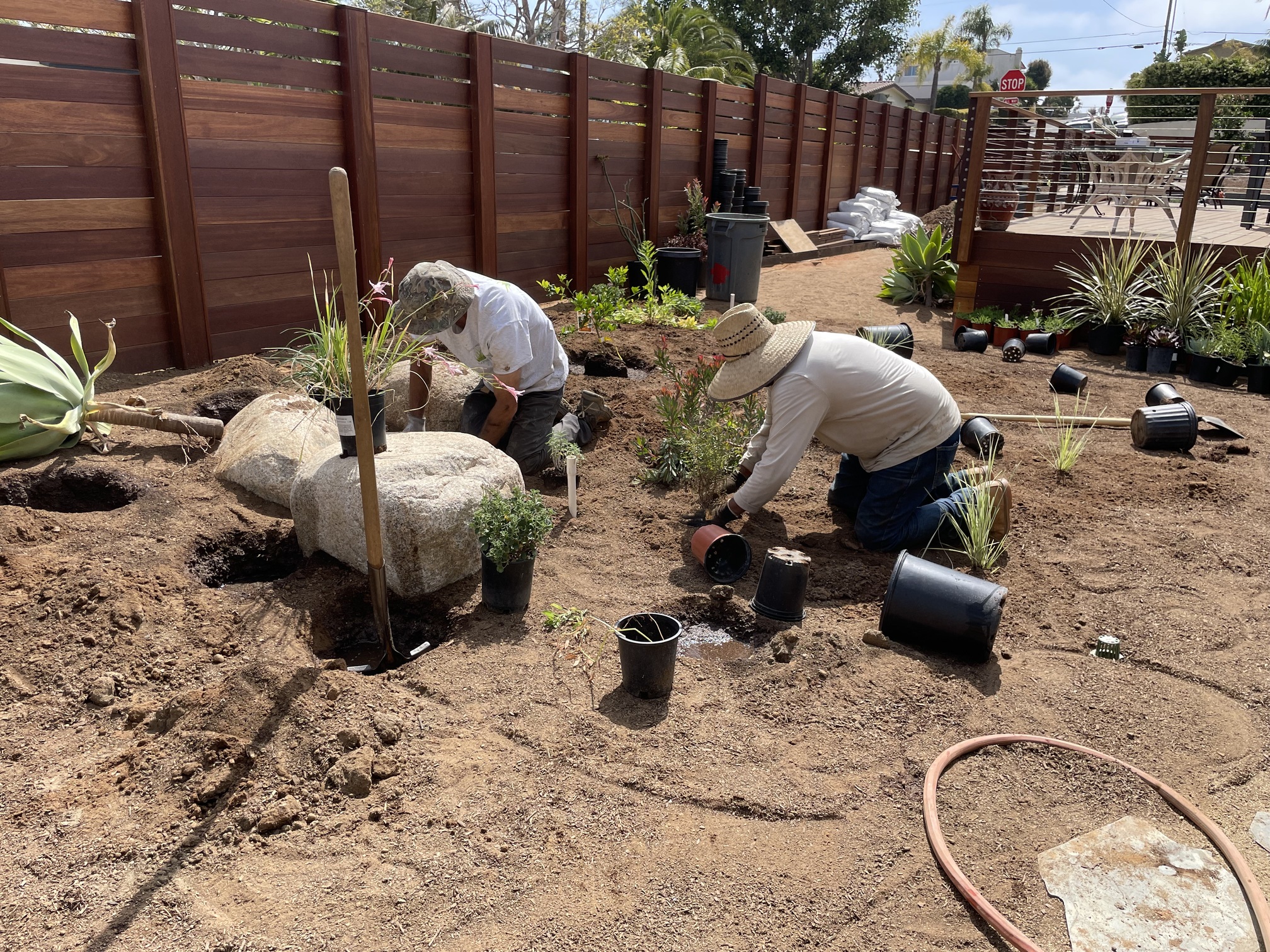The best planting time of the year is here! Yes, fall is for planting. In other parts of the country, gardeners plant in spring, but here, we plant in fall.
As gardeners, our planting goal is for new plants to become “established.” That means plants survive transplant and grow new roots out into the surrounding soil. In addition to firmly anchoring plants in the ground, roots interact with beneficial soil microbes, some of which literally move water and nutrients to the roots. The water and nutrients support the plant to grow stems, branches, leaves, and more.
Well-rooted plants become healthy, long-lived plants.
As a rule of thumb, the larger the plant, the longer it takes to become established. A one-gallon plant establishes sooner than a five-gallon. A five-gallon plant establishes faster than a 15-gallon, etc. That’s one reason why smaller plants grow better and faster than the same plant in larger sizes. When you have a choice, always start with smaller sized plants.
Why not plant in spring? Good question! Spring isn’t the problem – the problem is the hot, sunny, dry summer that follows. Summer conditions suck water out of plant leaves. That creates enormous stress on plants. Add heat, sunlight, and water stress to transplant stress and plants often die.
In fall, days are shorter, and the sun is lower in the sky. There is more humidity in the air, too, all of which reduce the heat, sunlight, and water stress on new plants. At the same time, the soil is warm enough to stimulate new root growth. Hopefully, there will be rain, too. These are the perfect planting conditions.
Plants that go in the ground in fall have fall, winter, and spring to spread new roots into the surrounding soil. By the next summer, they will be far more resilient to heat, aridity, and harsh sunlight.
And need I add not to plant in summer? Summer is for planning, not for planting.





